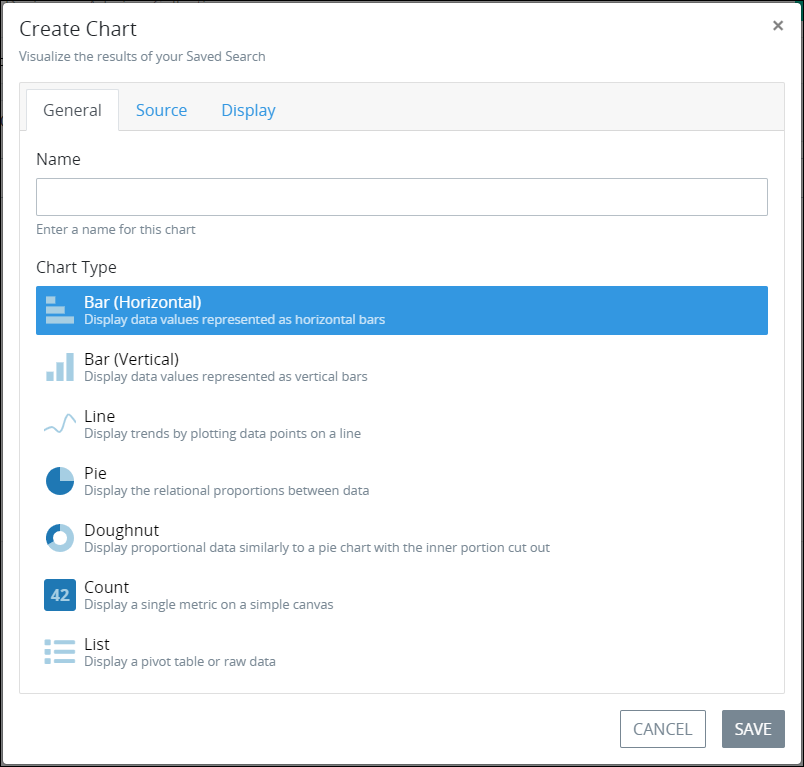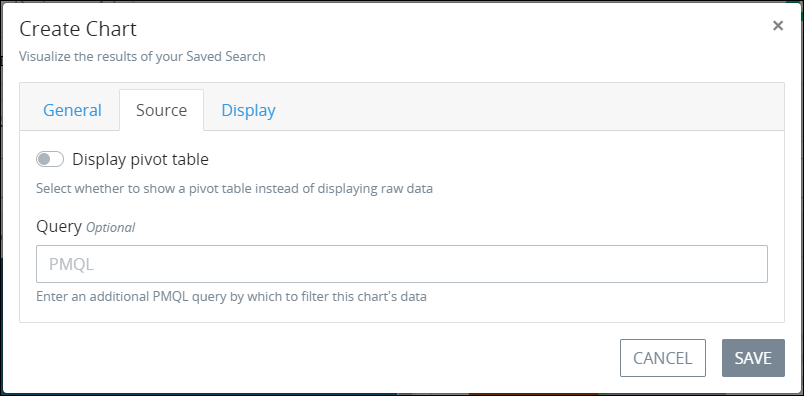The list chart displays the raw data or a pivot table for a Saved Search.
When a List chart displays the raw data for a Saved Search, the chart contents display similarly to the Saved Search results from which the chart is based. Click the Open Record icon ![]() to display the specific data in the list chart for that Saved Search.
to display the specific data in the list chart for that Saved Search.
The following list chart shows the raw data for Loan Requests.
.png)
List chart showing the raw data for Loan Requests
When a List chart displays a pivot table for a Saved Search, click a column header to pivot how the Saved Search results display.
The following chart shows a pivot table of the number of started Requests by the day of the week for Account Openings.
.png)
List chart showing a pivot table for Account Openings
Create a List Chart
Follow these steps to create a list chart type for a Saved Search:
View the search results for a Saved Search in which to create this chart type. The Data tab displays the data details for that Saved Search.
Click the Charts tab. The Charts tab displays all charts created for this Saved Search.
Click the +Chart button. The Create Chart screen displays the General tab.

In the Name setting, enter the name of the chart. This is a required setting.
From the Chart Type group, select the List chart type to visualize the results of this Saved Search. The List chart type displays chart data in tabular format. See chart example.
If you select the Bar (Horizontal), Bar (Vertical), Line, Pie, or Doughnut options, see Create a Horizontal Bar, Vertical Bar, Line, Pie, or Doughnut Chart for their specific settings to create those chart types.
If you select the Count chart option, see Create a Count Chart for its specific settings.
Bar (Horizontal) is the default chart type.
Click the Source tab to configure from which Saved Search's results to visualize in the chart.

Enable the Select Pivot Table toggle key to create a list chart from which any column header in the chart may be selected to sort the raw data. The Select Pivot Table is disabled by default. If the Select Pivot Table toggle key is enabled, the following settings display:
From the Series setting, select how to group the chart data. The series groups the chart content by the units of measurement in the X-axis for applicable chart types. See chart example that references the series grouping. The Series setting does not apply to count charts. Options that display in the Series drop-down menu derive from the columns configured from the Saved Search tabular data as displayed from the Data tab of this Saved Search. The default configurable columns vary for each type of Saved Search. The Recommended indicator for Saved Search results represent dates, numbers, and/or unique text results and are recommended when configuring the chart series. This is a required setting for applicable charts.
From the Category setting, optionally select a secondary measurement by which to aggregate the chart series. See chart example that references the category measurement. The Category setting does not apply to count charts. Options and their recommendations that display in the Category setting are the same as those in the Series setting.
From the Metric setting, select the chart contents from the Saved Search tabular-formatted results to aggregate as well as how to aggregate that data. The Metric setting options are numerically-based Saved Search results such as # that represents the ID for the Request, Task, or Collection record associated with that Saved Search. See chart example that references how that chart data is aggregated.
Select from the following options how to aggregate the selected chart metric:
Average: The average is the arithmetic mean calculated by adding a group of values, and then dividing by the count of those items.
Count: The chart visualizes the number of values of the metric you select.
Minimum: The chart visualizes the minimum value of the metric you select.
Maximum: The chart visualizes the maximum value of the metric you select.
Median: The median is the middle value of a group of values that is calculated by sorting each of the values of the metric you select, then visualizing the middle value.
Sum: The sum is the arithmetic addition of each value of the metric you select. This is the default option.
This is a required setting.
In the Query setting, optionally enter a ProcessMaker Query Language (PMQL) query from which to further filter the Saved Search's results. See the following topics for information how to use PMQL for Requests, Tasks, and Collections:
Click the Display tab to configure the appearance and style of the Saved Search chart.
Follow this step if the Select Pivot Table toggle key is enabled from the Source tab:
From the Background Color setting, select a color as the background for the list chart canvas.

Follow these steps if the Select Pivot Table toggle key is disabled from the Source tab:
From the Background Color setting, select a color as the background for the list chart canvas.
Enable the Display link toggle key to display a link that, when clicked, redirects to the corresponding Request, Task or Collection record depending from which type of Saved Search the list chart derives its data. The link displays as the Open Record icon
 at the end of each row. The Display link toggle key is enabled by default.
at the end of each row. The Display link toggle key is enabled by default.Enable the Make rows clickable toggle key to allow anywhere within a list chart row to redirect to the corresponding Request, Task or Collection record depending from which type of Saved Search the list chart derives its data. The Make rows clickable toggle key is disabled by default.

Click Save. If a required setting does not contain a value or selection, the following message displays: The given data was invalid.. Otherwise, the chart and the following message display: Successfully Created Chart.